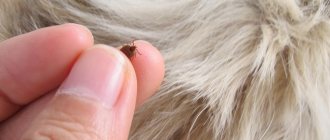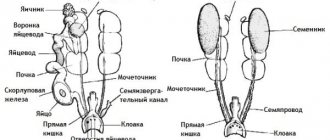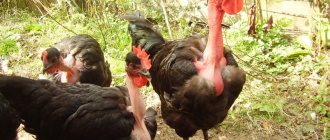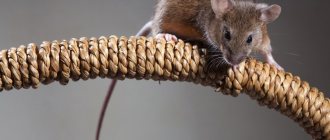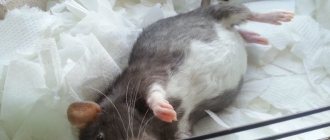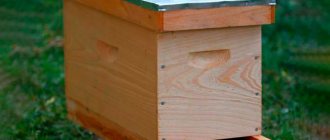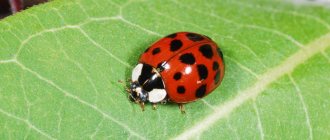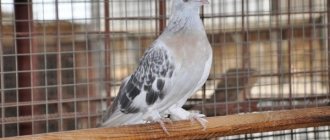Good afternoon, experienced and novice poultry farmers! Secrets of raising chickens at an early age: from stages of embryonic development to feeding conditions and maintenance in our material. Let's start with a detailed explanation from A to Z of how to raise chickens at home from scratch. Where to begin?
Success in poultry farming largely depends on the approach to incubating eggs, keeping and feeding early-age chickens. Beginners will be interested in knowing the internal changes of an incubated egg. With such information, it is possible to carry out control openings and determine whether the correct regime is maintained in the incubator.
Tips for choosing hatching eggs
First, bet on the freshest fertilized eggs, with a maximum 7-day shelf life.
Second, select eggs that have been stored at 10 to 18 degrees and 75 percent relative humidity.
Thirdly, eggs with defects (cracks in the shell, marbling, rough shell...) are not your option.
Of course, try to place even batches of medium-sized eggs into the incubator.
By the way, avoid incubating eggs with internal damage. For example, with broken cords.
Types of devices
The following equipment options are available for incubating chicken eggs:
- Automatic . In such devices, egg turning occurs automatically up to 12 times a day.
- Manual . In such devices, the incubation material must be turned over manually. Perform similar actions at intervals of 4 hours. Each time you have to open the incubator, which has a detrimental effect on the incubation of chickens and reduces the hatchability rate.
- Mechanical . Here the eggs are turned manually in one motion using a special lever. This will only take 2 seconds.
How to raise chickens at home from scratch
The embryonic period can be roughly divided into four stages.
First stage. 1-7 days of incubation. First, cells actively divide, the size of the germinal disc increases, and the circulatory network of the embryo appears. In a 2-day embryo, the circulatory system continues to form. The process of amnion formation begins.
We are talking about a shell that forms a bag filled with liquid that protects the future chicken from external influences. The allantois, the yolk sac (naturally its rudiments), and the heart are visible. At the end of the third day of incubation, some parts of the head are visible. At the end of the fourth day, the organs of vision and limbs are visualized.
If 4-day embryos are less than 8 mm? Of course, something is wrong with the incubation mode parameters. The size of the embryo on the fifth and sixth days is 1.5 and 2 cm (with a 2-gram weight). A 7-day embryo has wings and large eyes; its cervical region and oral cavity are actively developing. Fingers and eyelids are also barely visible.
Second stage. 8–14 days of incubation. A normally developing 8-day embryo can be identified by its formed fingers and the rudiments of sexual characteristics. You can determine his gender.
At the end of 10 days of incubation, the chick is characterized by a clearly visible beak, limbs, wings, eyes and feather papillae. The size and weight of an 11-day embryo is 2.5 cm and 3.5 g. A 14-day embryo is mobile. Its size is 4.5 cm.
Third stage. 15-18 days of incubation. The third stage of embryo development is normally accompanied by the chick consuming yolk substances and the end of claw formation. At the end of day 18, a 7cm chick weighs about 20g.
And finally, the fourth stage . 19–21 days of incubation. The 7.5-8 cm chick not only moves, but also makes a “voice” and tries to leave its shelter.
When to ovoscope chicken eggs?
The first ovoscopy can be carried out 4-5 days after egg laying. With this examination, it is possible to separate non-living and unfertilized embryos so as not to incubate them. The second candling is carried out after 7-8 days of egg incubation. At this time, a large dark embryo should already be visible.
Interesting materials:
What is generational continuity? What is pressing in basketball? What are straight copy stitches? What are participial and adverbial phrases? What are techniques in literature? What is a direct speech application? What is the Tao Tao app? What does it mean accepted to a transit warehouse? What is customary in the communications department? What is food appropriation?
Chicks hatching in an incubator
The process of chicks coming out. Sometimes the offspring appear later than expected - 25 days after loading the incubator. This is due to poorly selected temperature conditions. Small temperature fluctuations, as a rule, do not harm young animals. Temperature fluctuations are another matter.
Low temperature during the entire incubation is the reason for embryo loss.
By the way, late exit is typical for artificial incubation. Under the brood hen, the young hatch at the proper time.
An imminent replenishment of the poultry house is indicated by:
- First, there are audible squeaks.
- Secondly, the mobility of eggs. This is the result of the activity of the chicks.
- Thirdly, these are the sounds that occur when the chickens try to break through the shell.
"Obstetrics"
The hen accurately identifies chicks for which the shell is an insurmountable obstacle. The mother's beak comes to their aid - one or two blows and the peck (crack) is ready. In artificial incubation, the rescuer is the poultry farmer. At the same time, assistance to chicks is justified in the following situations:
- If the size of the crack and peck remains unchanged. In this case, the chicken experiences oxygen starvation and dies after 25-30 (sometimes earlier) minutes.
- If, with a widening crack, the chick cannot hatch after three or more hours. This is usually due to the egg shell being too strong or the chick being weak.
Help is provided by evenly breaking off pieces of shell around the peck. A “window” with a diameter of 2-2.5 cm should become free. The freed space should coincide with the baby’s head. Please note that in this case you need to be a jeweler, since damage to the membrane can disrupt the integrity of the vessels that did not have time to detach from it. But this ends in blood loss and death of the chicken.
How to properly help a chicken hatch, see this article. Personal experience!
Many experienced poultry farmers refuse “obstetric care”, and problem eggs are simply disposed of. Why? The fact is that a large percentage of weakened individuals will die in any case for various reasons.
Of course, they can be separated into a separate group, provided with “greenhouse” conditions and more intensive feeding. But these are all additional time, physical and even financial costs.
Important point! If the chicks hatch unfriendlyly, the hen can walk the emerging offspring. Naturally, in the absence of a chicken, the remaining eggs “die out.” To avoid this prospect, remove existing chicks and return them to the mother after all the offspring have hatched.
Chicken coop microclimate: temperature, humidity and lighting
In order for a brood hen to hatch chicks in a chicken coop, an appropriate microclimate is required:
- control of gas composition of air;
- maintaining the correct temperature;
- ensuring the required level of lighting;
- stabilization of air humidity.
Regarding eggs, the matter is somewhat simpler than with an incubator. Since the egg without an incubator is constantly under the hen, there is no need to worry about whether it is maintained at the correct temperature and humidity. This is a natural way of incubation, and the chicken itself creates the necessary conditions for the eggs.
But a hen needs special conditions to effectively hatch an egg. An adult bird feels comfortable at an air temperature of 15 to 18 degrees.
This air temperature can be maintained in the autumn-winter period by artificial heating. For these purposes, it is better to choose chicken coops with a wooden floor, insulated with several layers of hay or straw.
You can also use infrared lamps. They can be turned on during the cold season, along with an infrared heater. This will allow you to hatch chickens without an incubator even in winter.
But it is important to ensure not only that the temperature does not drop relative to these indicators. An increase in air temperature can negatively affect the condition of chickens, and above 30 degrees can lead to the death of a chicken. In this case, air humidity should be from 60 to 70%.
It is necessary to use a gas analyzer to monitor the gas composition of the air in hens. The litter produces hydrogen sulfide and ammonia. These gases make the bird feel worse. They should be no more than 5 and 15 mg, respectively, per 1 m3.
In order to ensure the required level of humidity and air composition, care should be taken to ventilate the room for the hens - install a ventilation pipe. But under no circumstances should drafts be allowed!
Natural lighting should be used to the maximum. The artificial one should not be dimmed - the brightness will irritate the hens, they can abandon their eggs, become aggressive, and destroy future offspring. You need to use incandescent lamps from 40 to 60 W in the calculation: 4 W x 1 m2 of floor. The nests can be curtained a little.
| No. | Microclimate factor | Index |
| 1 | Air temperature | 15-18̊ C |
| 2 | Lighting | 4 W x 1 m2 floor |
| 3 | Air humidity | 60-70 % |
| 4 | Gas composition of air: · ammonia hydrogen sulfide | no more than 15 mg per 1 m3 no more than 5 mg per 1 m3 |
How to raise day old chicks at home?
How are the hatched young kept?
Day-old chicks have an underdeveloped thermoregulation system and immune system. Therefore, in uncomfortable conditions they get sick. Of course, they lag behind in growth and development.
After two or three chicks hatch, the temperature in the incubator changes. The temperature on the first day drops from 37 to 35 degrees. The optimum temperature on the second day is 28.5 degrees. By 6-7 days of age, a temperature of 23-25 degrees is created and maintained for chickens.
During the incubation period, the apparatus was maintained at 55% relative humidity. With the appearance of the first chicks, the indicator decreases slightly. You can limit yourself to removing containers with water.
What about the light mode? In the first 7 days the lamp does not turn off. In the second week it turns off at 21:00 and turns on at 6:00.
Chicks hatched by a hen are kept in a cardboard box. At the same time, the same microclimate parameters are maintained. After all the offspring have emerged, the young return to the nest.
The recommended duration of stay in the incubator for chicks that have emerged from the shell is up to two hours. In general, as practice shows, it is enough to wait for them to dry and you can safely begin moving the young animals into a cardboard box (you can use a small wooden box).
Woven material or newspapers are usually chosen as bedding. On top, the chickens' temporary home is equipped with a 100-watt heating lamp that maintains a temperature of 35 degrees. Additional heating is also provided through heating pads and bottles filled with hot water. At night, when the lamp is turned off, the chicken “kindergarten” is covered with a cloth. The water in additional heat sources changes as it cools.
After the box, the chicks are kept in a brooder until they are 30 days old. Its design consists of plywood, cardboard or wooden walls and a lid made of a fine-mesh mesh or lattice.
The brooder area is calculated so that there are 0.5-0.7 square meters per 10 chickens. The brooder is also equipped with heating and lighting devices.
A common mistake is keeping chickens under one month of age together with adult flock. With this approach to business, it is unrealistic to create an optimal microclimate for different age groups of birds.
Ovoscopy
An ovoscope is used to monitor the development of the embryo. This device allows for the culling of undeveloped embryos.
The first ovoscopy should be performed on the 6th day after laying the eggs in the incubator.
Thanks to the device, it is possible to examine and detect defects such as growths, depressions, and pimples on eggs. Due to the presence of these defects, the starting material becomes unsuitable for incubation. If, for example, you place an egg with a crack in an incubator, then all the moisture will leave it, which will have a detrimental effect on the embryo.
Using an ovoscope, it is possible to determine the condition of the air chamber . Thus, it is easy to understand whether an egg is fresh or not. To do this, shine it in the area of the blunt end. There you can find a spot that is a little darker than all the others. The smaller the air chamber, the younger the material.
Old eggs will not develop well when placed in the incubator. If during turning the yolk sharply goes to one end, then this indicates a torn chalaz. Such material needs to be rejected.
The following table will help determine the correct development of the embryo:
- Good. During examination, blood vessels are visible. They should be evenly distributed. If you shake the egg a little, you can see the shadow of the embryo.
- Satisfactory. Blood capillaries are concentrated in the central part of the egg. This indicates slow development of the embryo.
- Bad. In appearance, the embryo resembles a large blot. It is concentrated close to the shell. Such material is removed from the incubator.
You can perform ovoscopy again before pecking . This is necessary to check the embryo. If the eggs are without a lumen, then chicks should be expected soon.
Incubation of chicken eggs is an excellent option not only for industrial, but also for home chicken breeding. Not all breeds of laying hens are capable of hatching eggs, but thanks to the incubator there will be no problems with this. It is only important to strictly adhere to the recommendations given and approach this process with full responsibility.
Readers may find the following materials useful:
- shelf life of raw eggs at room temperature;
- incubation period of chicken eggs.
About feeding and watering chickens
They begin feeding the young animals immediately after they dry out. The diet of day-old chicks consists of boiled crushed yolk, semolina, crushed millet and barley. Millet and barley alternate. In parallel with the food, the young animals are given boiled and warm water.
At this age, it is useful to feed the bird a decoction of yarrow. This is one of the preventive measures aimed at preventing gastrointestinal pathologies. A weak solution of potassium permanganate is also useful for day-old chicks.
The feed mixture for 2-day-old chicks is presented:
- Shell;
- fermented milk products, including kefir, milk and cottage cheese;
- oatmeal;
- wheat;
- barley and corn grits;
- greens;
- starting feed.
This mixture is fed to chickens up to 10 days of age. Particular attention is paid to vitamin and mineral nutrition.
For day-old young animals, 5-6 times feeding is recommended. It is not allowed to leave leftover food in the feeders, as they will turn sour and therefore can cause poisoning.
Advice! After the first feed, watch your charges eat. There is a high probability of having individuals who will not immediately understand what to do with food.
This bird will need your help. What to do? Tap the spilled food with a pencil. This way the chicken will learn to peck faster.
Inspection of chicks
Egg breeds are assessed six hours after hatching, meat chickens are assessed after 10 hours.
A newborn chick should have the following external signs:
- the umbilical cord is closed, there are no traces of blood;
- yellow chicken has a shine and is soft to the touch;
- eyes are not cloudy;
- hard beak;
- the wings fit tightly to the body;
- The chicken is active and reacts to noises.
If the breeder is interested in the sex of the chicken, then there are several simple ways to determine the sex of the chicken:
- If you take the chick by the scruff or paws, the cockerels will hang calmly. In the first case, the chickens will tuck their paws, and in the second, pull their heads up.
- Under incubation conditions, the hens hatch first.
- A chicken has long feathers on its wings alternating with short ones, and a rooster has feathers of the same size.
In industrial conditions, to distinguish a cockerel from a hen, the cloaca of chickens is examined for the presence of a genital tubercle.
For farmers involved in breeding egg-laying chickens, it will be interesting to know how to determine the sex of a chicken by egg:
Determination by the shell of the egg from the side of the sharp edge - by the presence of tubercles and rings when palpated, one can conclude that a rooster will hatch. When candling an egg with an ovoscope, you need to pay attention to the position of the air sac. If it is located strictly in the middle, then a male individual will hatch from the egg.
Difficulties in raising chickens
Non-contagious pathologies provoked by errors in creating feeding and housing conditions.
Overheat
The accompanying problems include: general weakness, lethargy, low mobility, and refusal to feed. Often young animals overheat due to lack of water. Therefore, drinking bowls filled with warm water should always be available to him.
Indigestion
This is the result of using low-quality feed and unsanitary conditions. Prevention of this problem is based on the use of food and water that meets quality and safety criteria. It is impossible to do without regular cleaning of waste products and feed residues.
Poisoning
The likelihood of such a problem is increased by disinfectants, rodent poisons and other chemicals. Poisoning is also recorded with excessive amounts of salt.
Cannibalism
Chicks peck at each other more often in stressful situations. For example, a stress factor that causes cannibalism can be very bright lighting or very long daylight hours.
Rickets
This disease makes itself felt when there is a deficiency of vitamin D. Which, by the way, is synthesized with the participation of ultraviolet radiation. To prevent such a deplorable prospect, it is necessary to periodically give the young animals an oil solution of vitamin D.
Interesting fact! After mating with several roosters, the hen is able to get rid of the ejaculate of the weakest males.
We told you how to raise chickens at home from scratch. We hope that the information will help beginners.
If we missed anything, please share important tips in the comments.
Subscribe to site updates and our channel “Chicken”. Let's take care of poultry together.
Good luck everyone!
Did you like our tips? Share with friends on social media. networks!
How does a rooster impregnate a hen?
One rooster should have an average of 10 girlfriends
The sexual physiological characteristics of the rooster are not visible outwardly; the intimate organs of birds of both sexes are the same and represent a cloaca. In roosters, the testicular canals exit into the cloaca, and in chickens, the oviduct. During sexual intercourse, the cloaca come into contact and the seed enters the hen's oviduct. Fertilization takes place in the oviduct funnel - sperm penetrate there after mating. They can be stored there for up to 20 days: the eggs will be fertilized during this time, even if the rooster does not trample this hen.
A small harem will lead to the fact that a loving rooster will simply torture the females. They will look plucked and unhealthy, because in a fit of passion the male sits on the lady’s back and grabs the scruff of the neck with his beak.
Rooster tramples hen
However, it is worth noting: the fewer coitus a rooster has per day, the more “live” eggs there will be, and, accordingly, offspring. In large farms, where one male is not enough, roosters of various age categories are kept. Otherwise, bloody battles for leadership cannot be avoided.

